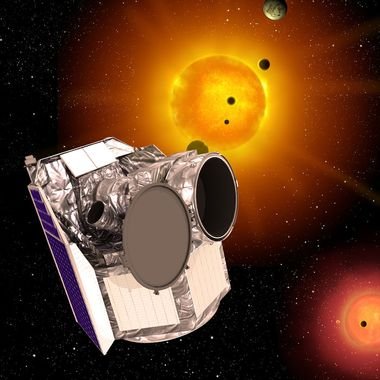European Space Agency is about to launch the telescope CHEOPS (Characterising Exoplanets Satellite) to study exoplanets.
Source: MIT Technology Review
What is it? CHEOPS (the Characterising Exoplanets Satellite) is a small space telescope designed to investigate exoplanets that are larger than Earth and smaller than Neptune. It will be tasked with measuring the sizes of known exoplanets whose mass estimates have already been determined with ground-based instruments. Armed with the mass and size numbers, scientists should be able to ascertain the densities of these planets.
How does it work? CHEOPS works much like other exoplanet-studying missions. It will study targets as they transit in front of their host stars, monitoring the dimming and brightening of starlight to figure out the planet’s size. The plan is to conduct multiple observations on select target planets, especially ones that are believed to be potentially habitable.
Why does it matter? Knowing a planet’s density can help reveal a few key things about whether it might be habitable. First, it lets us know whether it’s a rocky or gaseous planet—the news is obviously better when it points to a solid surface. Second, if there’s an atmosphere on that planet, the density can be used to tell us what type atmosphere it is and how thick—i.e., whether it has the sort of protective layer necessary to keep the surface warm and cozy for life. Although none of this guarantees that life could survive on the surface, it certainly boosts the odds.
When will CHEOPS be launch?
The launch should be today, Tuesday at 9:45 in Central European Time. However, according to news site Cnet, there was a software error and they had to delay to Wednesday at 3:30 in EST.
Other information

CHEOPS will be launch in Kourou base, French Guiana.

The rocket is 4 stages Soyuz-Fregat, and CHEOPS will be at 700 km altitude in a Sun-synchronous, dusk-dawn orbit, which pass through North and South poles.

Launch will be shown livestream in ESA’s site.



